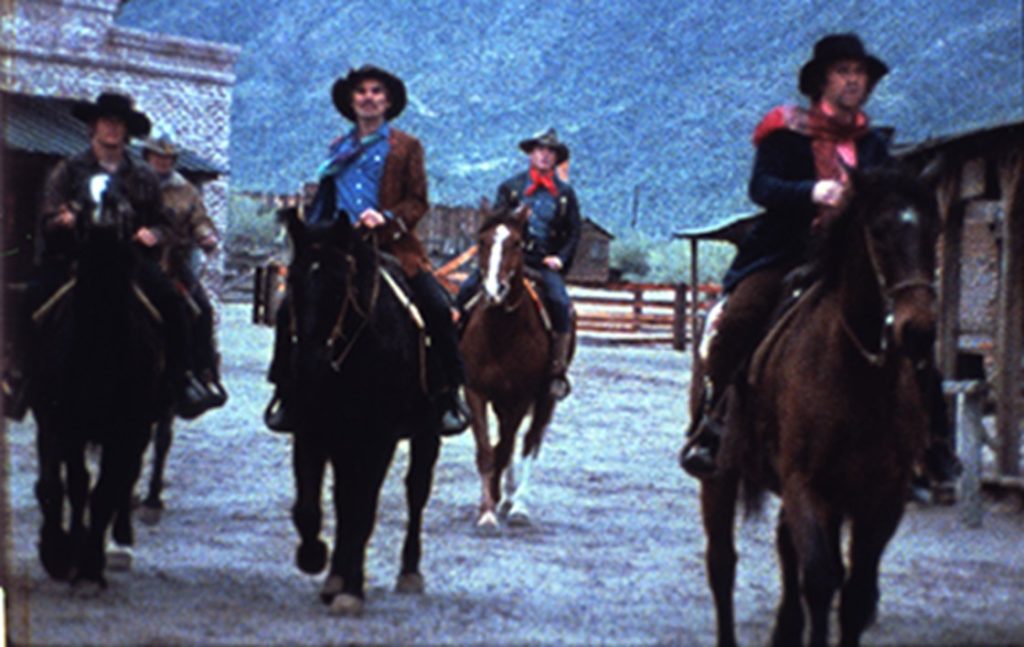“…a movie about a one-woman all-fag cowboy town“-Andy Warhol

If the fifties represented a trend in subverting the Western genre by inverting the sexual politics of the day, enhancing the explicitness of the violence, and embracing the sexuality of the films’ characters, then the sixties simply pushed those elements out and beyond into the realm of camp. And it is in this realm that Andy Warhol’s Lonesome Cowboys (1968) lives.
Like most of Warhol’s films at the time Lonesome Cowboys was co-directed by Paul Morrissey, who was bringing a degree of legitimacy to Warhol’s productions via his knowledge of classic Hollywood. So it is little wonder that Lonesome Cowboys follows the conventions, with regards to its sexual politics, set forth in Rancho Notorious, Forty Guns and Johnny Guitar. Except Warhol’s cowboys are all gay, thus relegating the “one-woman” in town into the role of mother and incestuous lover. The significance of this film beyond that has little to do with re-writing the conventions of the genre. Instead Lonesome Cowboys significance derives from the simple fact that it is a Western shot in Arizona. Up until this time “underground” filmmakers the likes of Warhol and Morrissey were restricted to making genre films for almost no money within the limits of the city in which they lived, New York.
Ironically it was the foul language and the vulgarity of the sexuality depicted in Lonesome Cowboys that isolated mainstream audiences while the more legitimate production value drove off the “underground” audience. Even Jonas Mekas had nothing good to say about the film in his column at the Village Voice. Without any audience, Lonesome Cowboys wandered into obscurity. However, the film has become a little more important in recent years when Gregg Araki cited it as an influence, thus canonizing it as part of the early Queer Film movement. As Mark Rappaport points out in his Silver Screen: Color Me Lavender (1997) the old Hollywood Westerns are brimming with homoerotic innuendos. Lonesome Cowboys then represents the first major film to make the inherent homoerotic qualities of the genre its primary concern.
